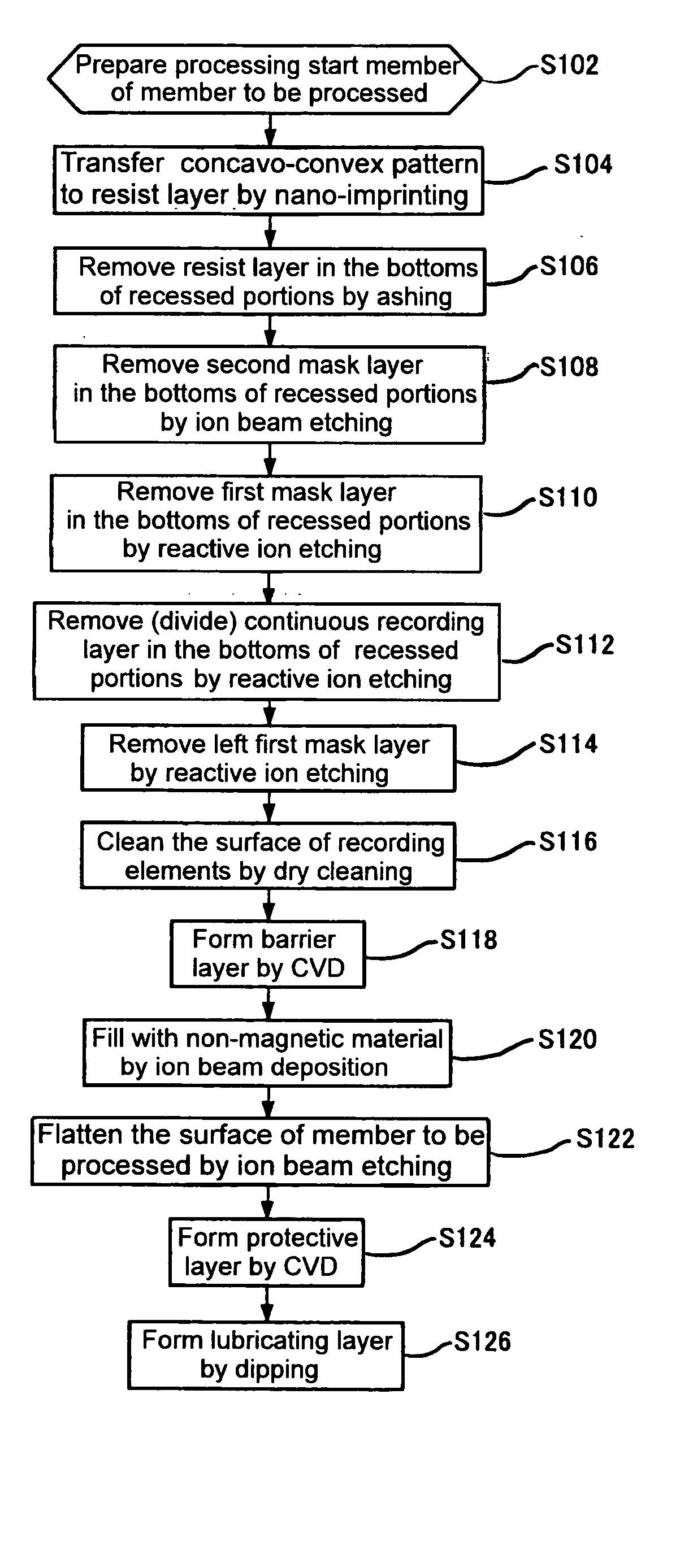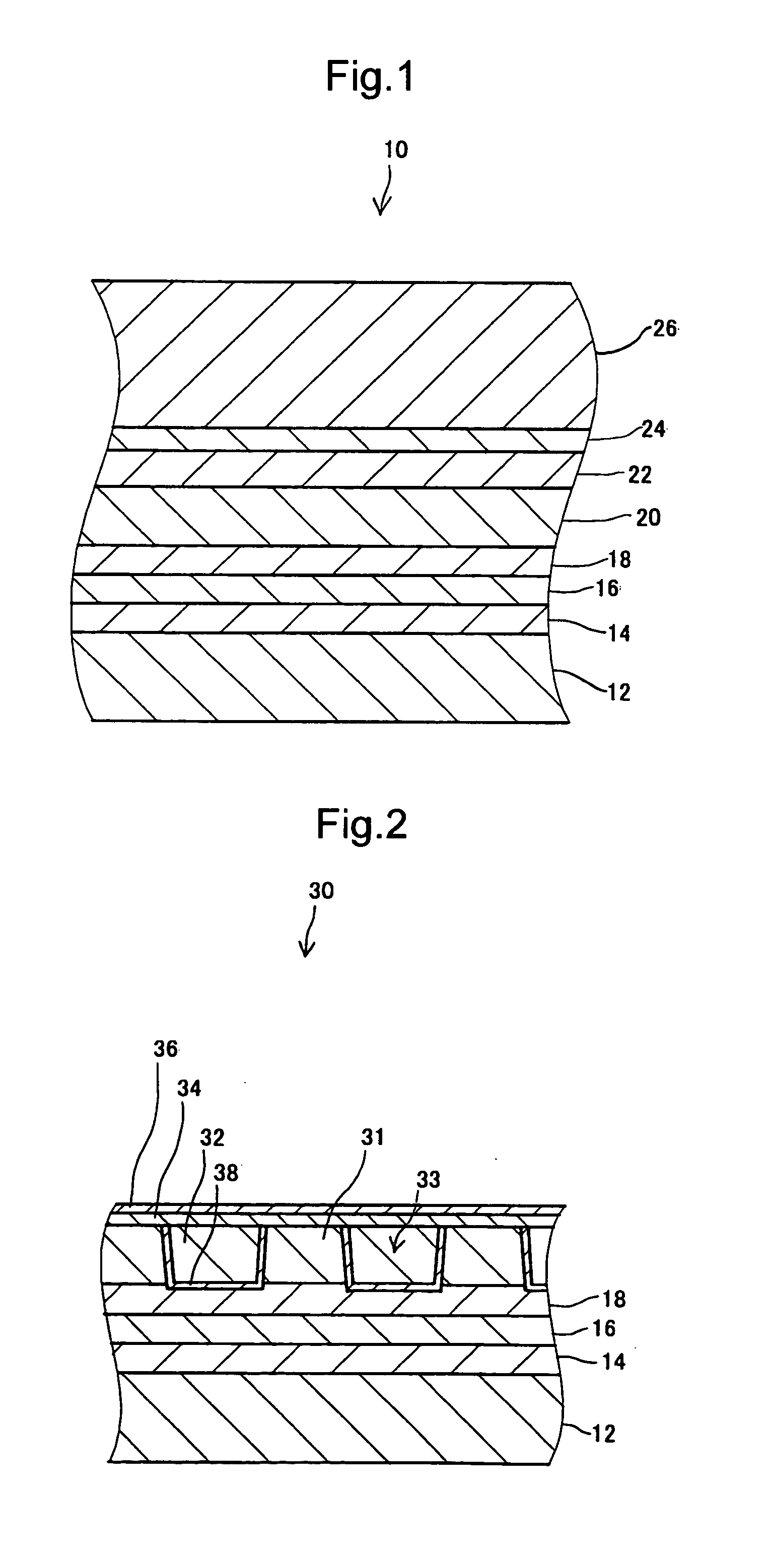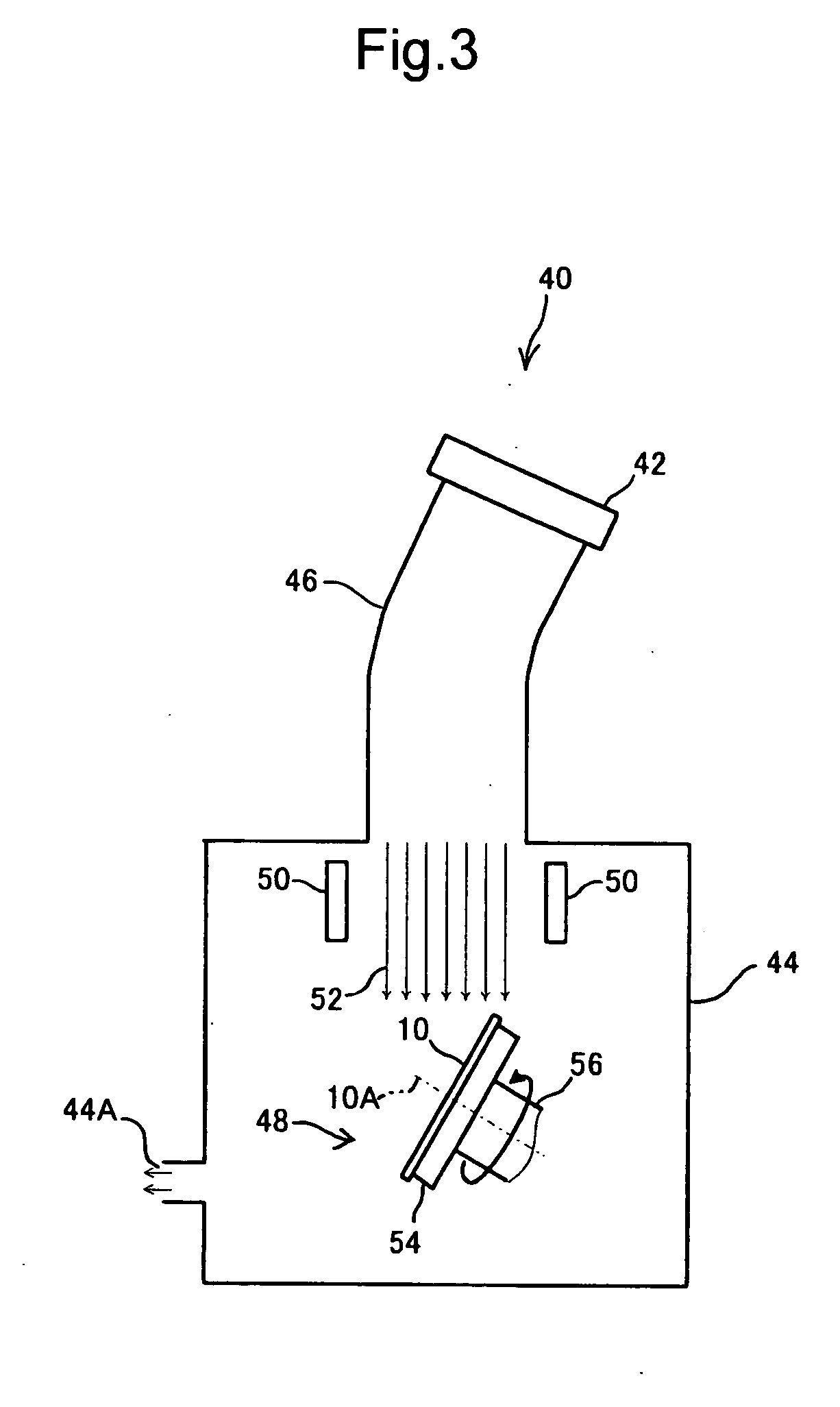Method for manufacturing magnetic recording medium
a manufacturing method and magnetic recording technology, applied in the field of magnetic recording medium manufacturing, can solve the problems of insufficient flattening of the surface of the recording layer and the non-magnetic material, the approaching limit of the improvement of the areal density by conventional improvement methods, and the inability to achieve the effect of improving the areal density
- Summary
- Abstract
- Description
- Claims
- Application Information
AI Technical Summary
Benefits of technology
Problems solved by technology
Method used
Image
Examples
example 1
[0090] According to the foregoing exemplary embodiment, four members to be processed 10 were processed into a concavo-convex pattern, and a continuous recording layer 20 of each of them was divided into many recording elements 31. In the concavo-convex pattern, as shown in a table 1, a track pitch (the distance between projections of the concavo-convex pattern=the distance between recessed portions) was 300 nm, the width of the recording element was 230 nm, the width of the recessed portion was 70 nm, and a step height (a height of the recording element) was 45 nm.
[0091] Then, a layer of SiO2 was deposited in a thickness of approximately 100 nm while rotating each member to be processed 10 at a rotational speed of approximately 18 rpm by use of the ion beam deposition device 40, to fill the recessed portions-between the recording elements 31 with SiO2. At this time, each member to be processed 10 was held in such a manner that the application angle of the particles of the non-magne...
example 2
[0097] Comparing with the example 1, four members to be processed 10 were processed while changing a concavo-convex pattern as shown in the table 1, and a continuous recording layer 20 thereof was divided into many recording elements 31. In the concavo-convex pattern, the track pitch was 200 nm, the width of the recording element was 150 nm, and the width of a recess portion was 50 nm. The other conditions were the same as those of the example 1.
[0098] A curve with a symbol B′ of FIG. 18 indicates relations between the application angle of the particles of the non-magnetic material in the non-magnetic material filling process and an average step height in the flattened surface of each member to be processed 10.
example 3
[0099] Comparing with the examples 1 and 2, four members to be processed 10 were processed while changing the track pitch to 150 nm, the width of the recording element to 110 nm, the width of the recess portion to 40 nm, and the step height to 35 nm. Then, a continuous recording layer 20 was divided into many recording elements 31. The other conditions were the same as those of the example 1.
[0100] In FIG. 15, a curve with a symbol C indicates relations between the application angle of the particles of the non-magnetic material in the non-magnetic material filling process and an average step height in the surface of the non-magnetic material 32 deposited on each member to be processed 10.
[0101] A curve with a symbol C′ of FIG. 18 indicates relations between the application angle of the particles of the non-magnetic material in the non-magnetic material filling process and an average step height in the flattened surface of each member to be processed 10.
PUM
 Login to View More
Login to View More Abstract
Description
Claims
Application Information
 Login to View More
Login to View More - R&D
- Intellectual Property
- Life Sciences
- Materials
- Tech Scout
- Unparalleled Data Quality
- Higher Quality Content
- 60% Fewer Hallucinations
Browse by: Latest US Patents, China's latest patents, Technical Efficacy Thesaurus, Application Domain, Technology Topic, Popular Technical Reports.
© 2025 PatSnap. All rights reserved.Legal|Privacy policy|Modern Slavery Act Transparency Statement|Sitemap|About US| Contact US: help@patsnap.com



